Introduction
Follow this guide to remove or replace the rear glass panel of an LG G6.
Tools
Parts
-
-
For reference, the backside of the panel is shown in the first photo. Note the clearance between the edge of the panel and the fragile ribbon cable beside the fingerprint sensor.
-
Be careful as you slice and pry to the left side of the fingerprint sensor, as seen from the outside of the phone in the third photo.
-
-
-
Use a hairdryer, a heat gun, or prepare an iOpener and apply it to the lower edge of the G6 for about a minute to soften up the adhesive underneath the rear glass panel.
-
-
-
If you don't have a small object for propping, you can (carefully) perform this step at the edge of a desk or table to achieve the same angle of entry.
-
Lift the rear panel's bottom edge with your suction cup, opening a slight gap between the panel and the frame.
-
Once you've created a gap, press the flat end of an opening tool into the gap.
-
-
-
Slide the opening tool back and forth across the bottom edge of the phone, cutting through the adhesive securing the rear glass panel.
-
Once the adhesive is cut and the gap is wide enough, insert an opening pick into the gap to keep the adhesive from re-bonding. Remove the opening tool.
-
-
-
Additionally, you can use multiple opening picks for this process, leaving one in place on each side after you finish slicing to prevent the adhesive from re-adhering as it cools.
-
Slide the opening pick along the left edge of the phone to slice through the adhesive securing the rear panel.
-
-
-
Re-insert the opening pick into the bottom edge of the phone and slide it up the right edge of the phone, cutting through the adhesive holding it in place.
-
-
-
Carefully slide an opening pick across the top edge of the phone, separating the last of the adhesive securing the rear glass panel.
-
-
-
Once all the adhesive is cut, use an opening pick to pry up the rear glass panel.
-
Remove the panel.
-
-
-
Use tweezers to peel away any remaining adhesive from both the rear panel and the phone's chassis.
-
Clean the adhesion areas with high concentration isopropyl alcohol (at least 90%) and a lint-free cloth. Swipe in one direction only, not back and forth. This will help prep the surface for the new adhesive.
-
Peel away the replacement adhesive's liner, align it with the back of the phone, and press it into place.
-
Remove any remaining liners, and replace the rear glass panel.
-
After installing the rear panel, apply strong, steady pressure to your phone for several minutes to help the adhesive form a good bond, such as by placing it under a stack of heavy books.
-
-
-
Slide the blade of a halberd spudger or other plastic pry tool into the opening on the edge of the rear button bracket.
-
Continue sliding your pry tool around the bracket to cut all the adhesive holding the bracket to the rear case.
-
Remove the bracket.
-
-
-
Slide an opening pick between the rear button membrane and the rear case.
-
Slide the pick around the edge of the membrane to separate it from the rear case.
-
This might take some force, as the adhesive holding the membrane to the case is tenacious. Pry slowly, to avoid puncturing or stretching the membrane.
-
-
-
Use the blade of a halberd spudger or another plastic pry tool to pry the rear button chip off of the rear case.
-
-
-
Use an opening pick to pry the contact pad off of the rear case.
-
Remove the rear button assembly.
-
-
-
Apply an iOpener to the rear glass over the camera area to soften the adhesive under the camera bracket.
-
-
-
Insert an opening pick or other plastic cutting tool under the top left corner of the black camera bracket.
-
Slide the tool along the top edge of the bracket and around the corner to cut the camera bracket adhesive.
-
-
-
Insert your opening tool under the left side of the camera bracket.
-
Slide your tool down the left side of the bracket to continue releasing the adhesive.
-
Continue cutting and slicing until you can pry up the bracket.
-
Compare your new replacement part to the original part—you may need to transfer remaining components or remove adhesive backings from the new part before installing.
To reassemble your device, follow the above steps in reverse order.
Take your e-waste to an R2 or e-Stewards certified recycler.
Repair didn’t go as planned? Check out our Answers community for troubleshooting help.
One comment
Did a combination of the rear glass and front screen replacement for my dad’s LG G6. Easy. Great guide.

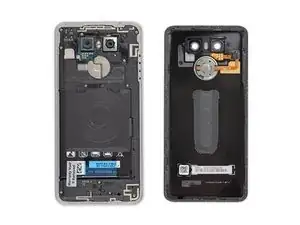
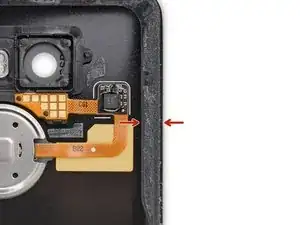
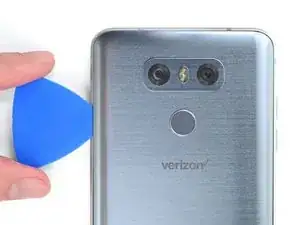
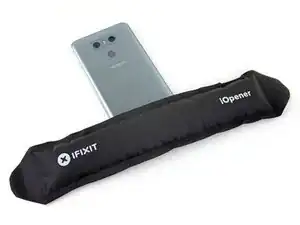
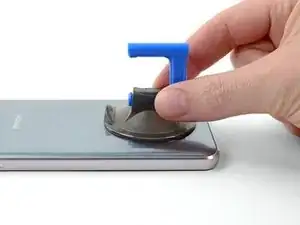
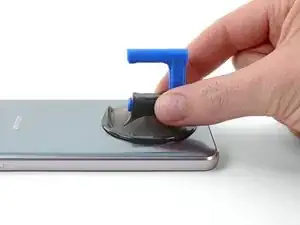

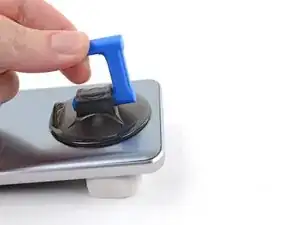
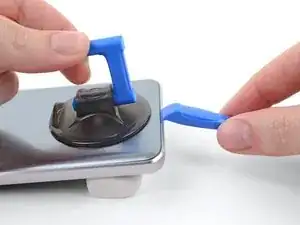
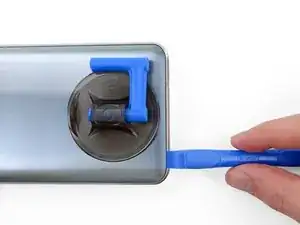
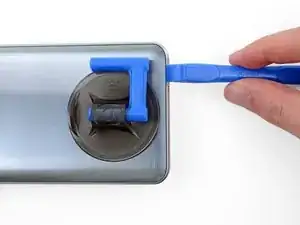
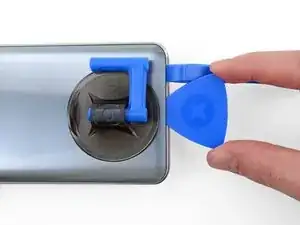
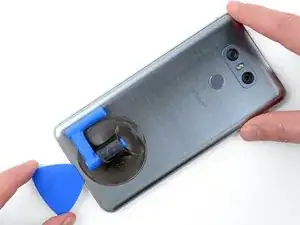
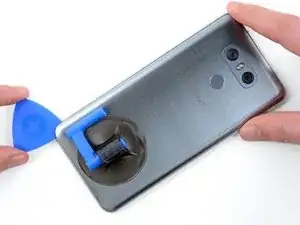
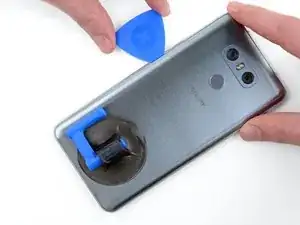
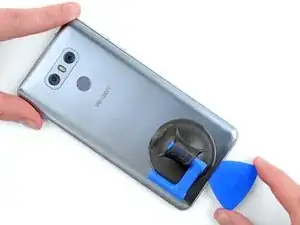
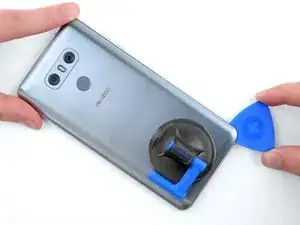
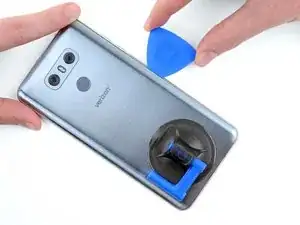

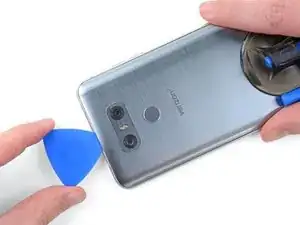

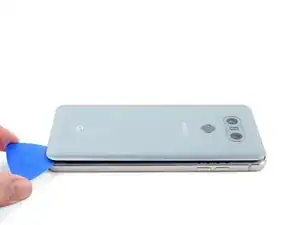
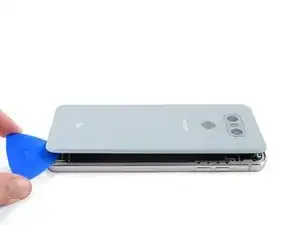
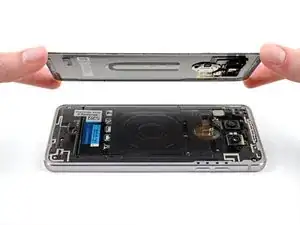

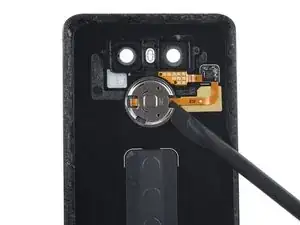
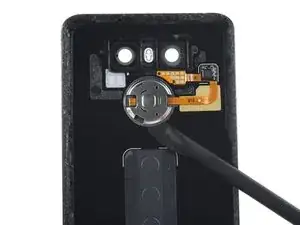

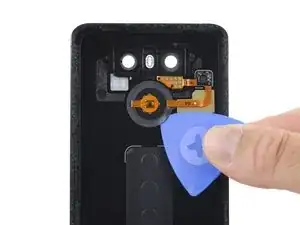
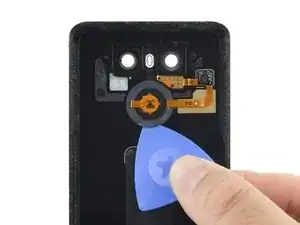
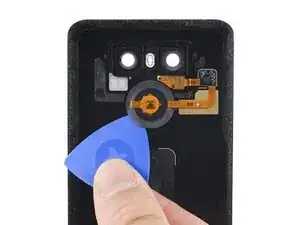
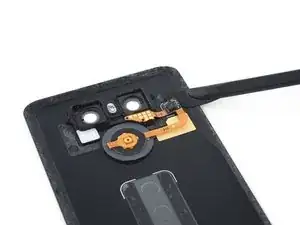
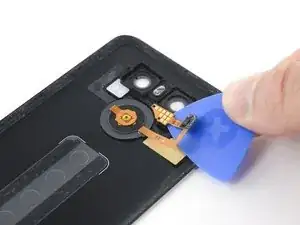
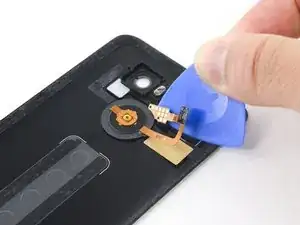
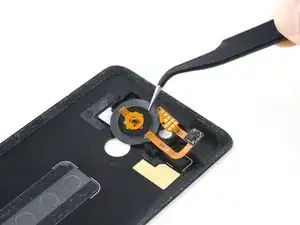
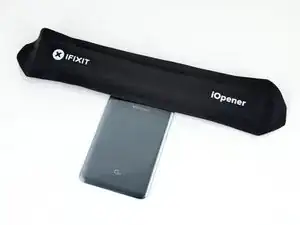
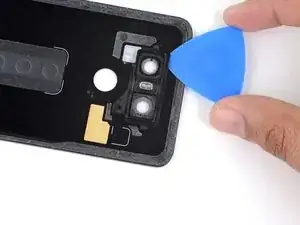
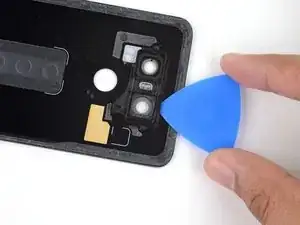
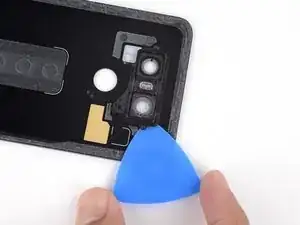
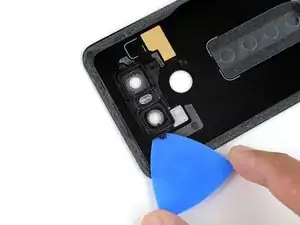
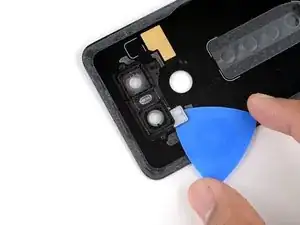
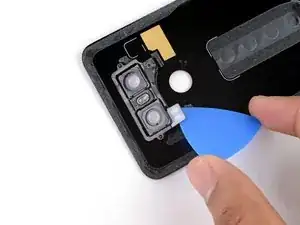
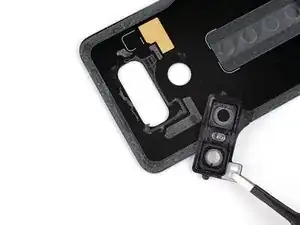

In the UK, the battery will cost you around £12 from Amazon, which would seem makes this exercise worth while. Very nice guide, but it should come with a warning that you should only attempt this knowing the risk that you may completely destroy your phone. You are also very likely to remove any kind of water and dust damage protection in the process. Probably worth letting a professional do it if you do not feel too confident in your abilities…
Lardy -